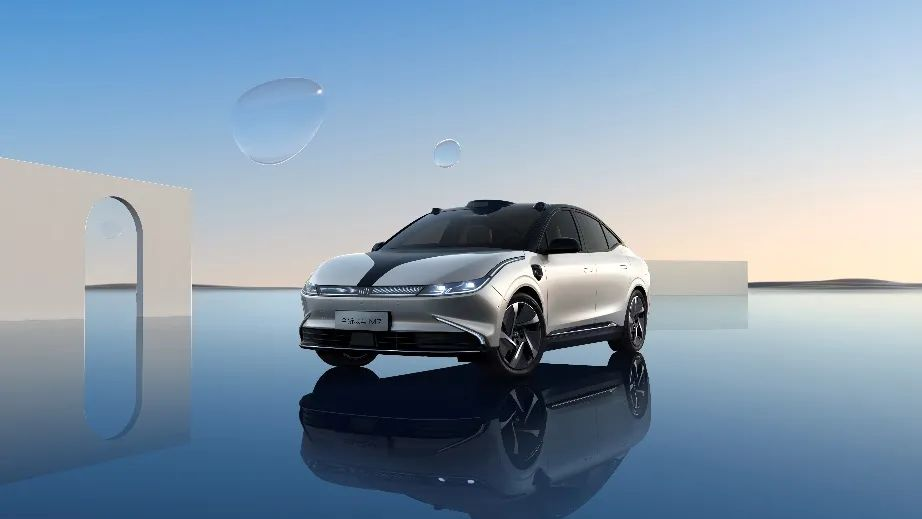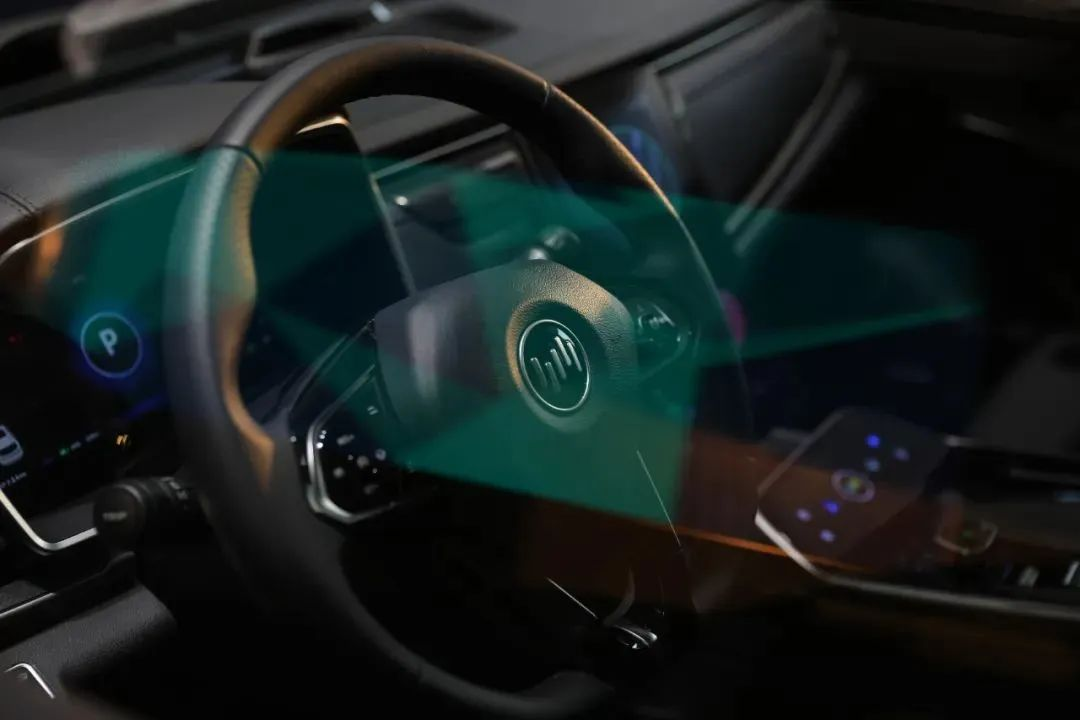Author | Yun Ge
In the past two years, WM Motor has been under considerable pressure in terms of funding and sales.
On November 21st, WM Motor CEO Shen Hui released an internal open letter, stating that the company’s production and operation have been affected by issues such as COVID-19, rising raw material costs, and delayed supplies. To address the funding pressure, WM will reduce operating costs through a series of financial measures. These measures include: the company’s management team taking the lead in voluntarily cutting their salaries in half, other employees receiving 70% of their basic salary, adjusting the payment date from the 8th of the following month to the 25th of the following month, and no longer offering bonuses or year-end rewards for this year.
In other words, WM Motors has adopted various measures such as salary cuts, layoffs, and closing stores to “ease the burden” so that the company can continue operating. As one of the “Four Little Dragons” of new energy vehicle manufacturing, on par with NIO, XPENG, and Li Auto, WM has fallen behind after going through a series of events such as spontaneous combustion and battery locking.
In the face of huge losses and various difficulties in IOP, WM’s survival pressure is increasing. Why has WM, who was once at its peak since its debut, reached this stage despite having a strong hand?
Highlights
At the beginning of its founding, while many new carmakers were still in the stage of creating concept vehicles, WM Motors founders Shen Hui and Lu Bin had extensive experience in the car industry, having worked for many years in car production, industrial chain management, and sales network construction. With their traditional carmaking experience combined with an internet mindset, WM Motors attracted widespread attention from the start.
From the outset, WM emphasized the need for independent production, and was able to successfully obtain car manufacturing qualifications by investing in established car manufacturers such as Zhongshunauto. After obtaining car manufacturing qualifications, WM worked quickly to build its own factory, starting with its first factory in Wenzhou. Compared to other new car manufacturers at the time, WM seemed more reliable, with a touch of the reliability of traditional car companies.
With Shen Hui, who has immersed himself in the traditional car industry for many years, WM had established a stable supply chain system by cooperating deeply with established suppliers such as Infineon and Bosch.
In March 2018, the first model of WM EX5 was produced and tested, which is the first independently established production line and the first model of a new domestic car manufacturing power. The EX5 is positioned as a compact SUV with a closed grille design and a comprehensive driving range of over 450 kilometers. At the same time, NIO was in search of its partnership with JAC, and both Ideanomics and Xpeng had not been mass-produced yet.

In 2019, the annual sales volume of WM reached 16,900, ranking second among the new domestic car manufacturers, far ahead of Xpeng and Ideanomics, second only to NIO. In 2020, WM sold a total of 22,500 cars, still showing a growth trend.
Compared with products, WM’s initial financing results were even more impressive. WM has gone through 11 rounds of financing, with a total financing of over 35 billion yuan, successfully attracting various capital including Tencent, Baidu, Sequoia, Linear Capital, Shanghai State-owned Investment Platform, local state-owned and industrial funds, etc. The D-round financing amount even reached 10 billion yuan, setting the highest record in the development history of new domestic car manufacturers. Founder Shen Hui once said in early 2020: “WM will definitely be one of the top three new domestic car manufacturers in China’s future”.
Falling behind
However, with WM’s double disappointment in sales and the Sci-Tech Innovation Board, the market has begun to voice concerns about WM being left behind.
Looking at the sales data, WM sold 1,117 cars in October this year, with a cumulative sales of about 30,000 cars from January to October. In comparison, other new domestic carmakers such as NIO, Xpeng, Ideanomics, and NOP respectively had accumulated sales of over 90,000 cars during the first ten months of this year, where NIO and Xpeng broke through 100,000 cars. In terms of sales, WM is far behind.
With regard to the decline in sales, Shen Hui said in an interview: “The model of relying on ‘losses’ to build sales barriers is no longer competitive; WM is no longer deliberately pursuing an increase in sales and will shift its focus from quantity to quality delivery.”

Poor sales naturally lead to poor performance.
Like other new domestic car manufacturers, WM has always been in a loss state. According to the prospectus previously released by WM, from 2019 to 2021, the company achieved revenue of 1.76 billion yuan, 2.67 billion yuan, and 4.74 billion yuan, respectively, with corresponding net losses of 4.15 billion yuan, 5.08 billion yuan, and 8.21 billion yuan, totaling more than 17 billion yuan in three years.Under the circumstance of poor revenue, the gross profit margin of WM Motor has been negative. Official data shows that the gross profit margins of WM Motor from 2019 to 2021 are -58.3%, -43.5%, and -41.1% respectively. In contrast, the gross profit margins of Li Auto and XPeng turned positive in the second and third quarters of 2020 respectively, and the gross profit margin of NIO turned positive in the first quarter of 2020.
The capital required for car manufacturing itself is huge. Therefore, WM Motor is also seeking to land on the capital market. In terms of IPO, Li Auto and XPeng have already listed in both the US and Hong Kong stock markets, and NIO is even planning to list in three places. However, WM Motor has not yet achieved its goal of going public.
As early as 2020, WM Motor announced that it would make every effort to become the “first new energy stock on the Science and Technology Innovation Board”. In October of that year, the Shanghai Securities Regulatory Bureau revealed that WM Motor was undergoing IPO counseling, but in the end, it failed. Industry insiders believe that this is related to WM Motor’s insufficient investment in technology and unsatisfactory financial data. This is also true. According to the data, the R&D investment of WM Motor from 2019 to 2021 accounted for 50.7%, 37.1%, and 20.7% respectively, showing a decreasing trend year by year.
The failure to land on the Science and Technology Innovation Board did not discourage WM Motor. In June 2022, the official website of the Hong Kong Stock Exchange showed that WM Motor had submitted an application for initial public offering. According to the regulations of the Hong Kong Stock Exchange, the validity period of the prospectus of the company planning to issue shares is six months. If the hearing is not passed within six months, it will become invalid. This means that in the upcoming December, the Hong Kong IPO of WM Motor will have a result.
Controversy
When the new forces in the automobile industry were vigorously opening up the market, WM Motor was tripped up by the “spontaneous combustion” problem.
From September to October 2020, WM Motor had four fire accidents within a month. In December 2021, within just four days, three fire accidents occurred consecutively. In January of this year, there was another spontaneous combustion accident in Hainan.
According to the investigation and determination of the fire department, the cause of the spontaneous combustion of WM Motor was “power battery failure”. In response to the frequent spontaneous combustion events, in October last year, WM Motor filed for recall of 1,282 vehicles with the State Administration for Market Regulation of China, believing that impurities were mixed in the production process of the battery cell supplier, which may cause short circuits in extreme cases and pose a fire hazard, thus having a safety hazard.
 Declaration, several major battery suppliers of WM are pushing the blame to each other, each claiming that it is not their own problem.
Declaration, several major battery suppliers of WM are pushing the blame to each other, each claiming that it is not their own problem.
To make matters worse, while the spontaneous combustion incident has not yet subsided, WM has been caught up in a “locking battery” storm. According to media reports, at the end of last year, WM launched a “Welcome the New Year User Special Offer” campaign, enticing car owners to upgrade their vehicles by offering shopping cards and providing comprehensive vehicle inspections. After the upgrade, many WM car owners found that their vehicles were not fully charged and their overall range was shorter. Many WM car owners have complained and requested compensation for this “locked battery” operation.
In the face of spontaneous combustion incidents, “locking battery” may easily help car companies avoid bigger risks than recalls. However, “locking battery” is not a positive solution to the problem.
Firstly, “locking battery” without informing customers is a violation of their right to know; secondly, by changing the overall range through battery lock, it causes losses to customers, and compensation should be made.
“Spontaneous combustion” and “locking battery” have severely damaged WM’s reputation. Product strength is the foundation for a company’s survival, but WM, which has the genes of traditional car companies, has fallen into its own specialty.
Can it survive the winter?
This is not only the darkest moment for WM, but also the challenge for the entire automotive industry. The problems mentioned in the internal memo of WM, such as rising raw material prices and tight supply of key components, are also threatening other car companies.
Shen Hui recently responded to the media, “WM’s stagnant sales are not because we cannot sell our cars, but rather because we intentionally limit sales.” He believes that “selling one car at a loss, the more we sell, the more we lose. The lower the stock price, the more the valuation drops, and the sales ranking becomes the loss ranking. Therefore, we need to adjust the sales volume, and we realized this early on, other companies also realized this.”
No matter what Shen Hui says, funding is still a problem that WM must solve as soon as possible. Therefore, going public in Hong Kong has become the life-saving straw for WM.
Now, the results of the second impact on the capital market have not yet settled. Whether WM can successfully land on the capital market is still unknown. The main reason for this salary reduction is to reduce expenses as much as possible before successful listing. However, in the long run, increasing research and development investment, facing consumer issues directly, improving product strength, enhancing brand trust, and returning to a rational growth path are fundamental.
 ## New Energy Vehicles: A Marathon, Not a Sprint
## New Energy Vehicles: A Marathon, Not a Sprint
New energy vehicles are a long-term race. No one can always stay ahead of the times. The story of WM Motor’s early lead in the era has come to an end.
Compared to the concepts of user, technology, and range that WmAuto and XPeng Chuang respectively developed, WmAuto’s current features are less distinctive. Especially in 2021, with the rapid rise of new energy vehicle companies led by BYD and Aiways, whose products are mainly in the 150,000 to 200,000 yuan range, WmAuto’s former advantages are gradually disappearing. In addition, compared with the technical strength and brand influence of traditional automakers, WmAuto’s advantages are not very obvious.
Looking at the entire new energy vehicle industry, it took Tesla 16 years to turn losses into profits, and brands such as NIO, Ideanomics, Xpeng, JIMU, and Voyah have been deeply mired in losses. Can WM Motor, which adheres to long-termism, survive the winter after launching a series of “weight reduction” measures? Only time will tell.
This article is a translation by ChatGPT of a Chinese report from 42HOW. If you have any questions about it, please email bd@42how.com.
